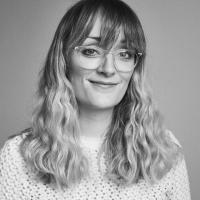For Argentinian artist Andrea Alkalay, the process is just as important as the resulting artwork, as she explained when we talked to her earlier this summer. Winner of the 2021 Latin America Professional Award, her artworks impressed the judges with their elegance and craftsmanship. Anna Bonita Evans reports.
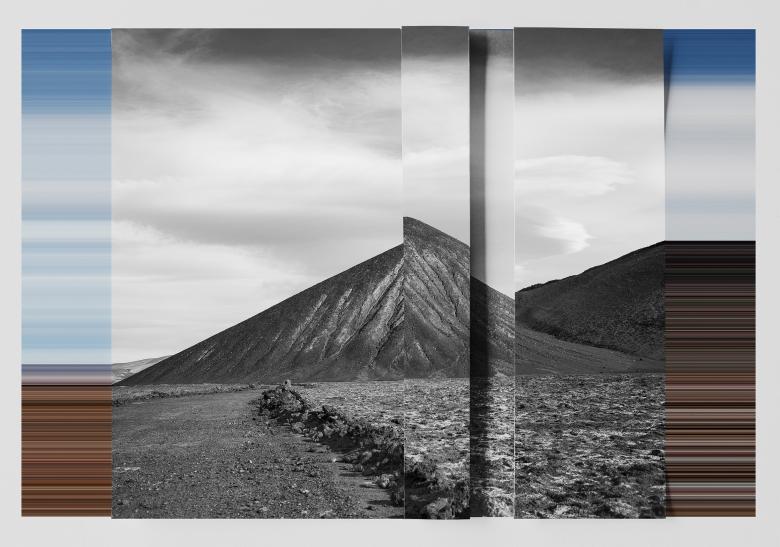
© Andrea Alkalay, Argentina, 1st Place, Latin America Professional Award, 2021 Sony World Photography Awards
For artist Andrea Alkalay, the photograph is just the starting point. Talking to me from her Buenos Aires home, she explains the intriguing process behind her award-winning series Landscape on Landscape. ‘Each image is more of a collage than a photograph,’ she explains. ‘First of all I look through my archive, choose a landscape image and then make two copies. I convert one into black & white, print it out and explore how best to fold or cut it – the physicality of the photograph really comes into play here. The second image remains in colour. I manipulate that digital file in PhotoShop, zooming in and stretching the pixels in a particular way to produce a highly abstract graphic which looks almost like a barcode. I don’t change the colours at all, it’s key they’re true to the original scene. The second image then becomes the background to the first. I paste both prints together to combine them into one new composition, or as I like to think of it, one new landscape.
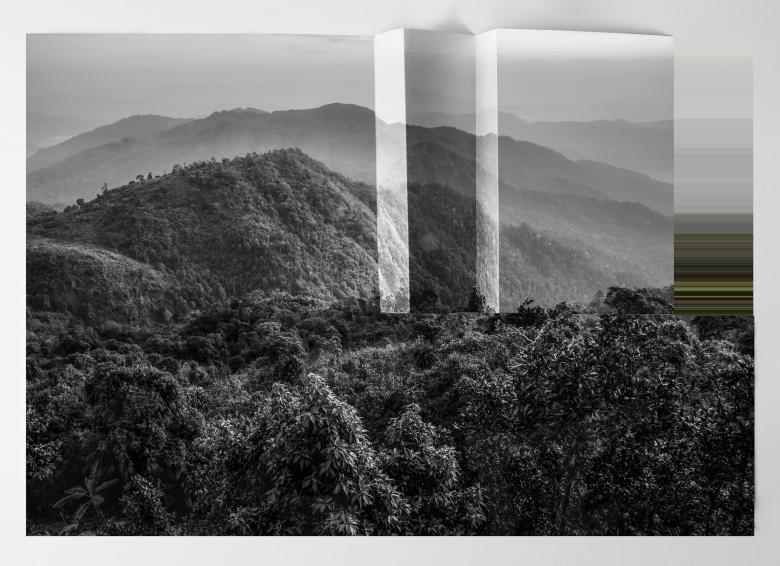
© Andrea Alkalay, Argentina, 1st Place, Latin America Professional Award, 2021 Sony World Photography Awards
Through skill, a clear vision and an enthusiasm to experiment, Andrea has created a set of artworks that are enigmatic and effortlessly elegant. When the world went into lockdown last March, Andrea dived into her new project and immersed herself in the joys of creative exploration. ‘If you don’t experiment it’s very difficult to move forward,’ she says. ‘Even if there is an error while you’re trying out new ideas or methods, it shouldn’t be dismissed. Down the line that mistake might open up a whole new opportunity or approach that takes the project towards exciting and unknown territory.’ Trying out many different materials for the monochrome layer of her collage – she tells me she tried cotton, card, tracing paper and countless fine art papers – Andrea equates this part of the process to her being the chief technician in her laboratory, methodically moving towards her own groundbreaking discovery.
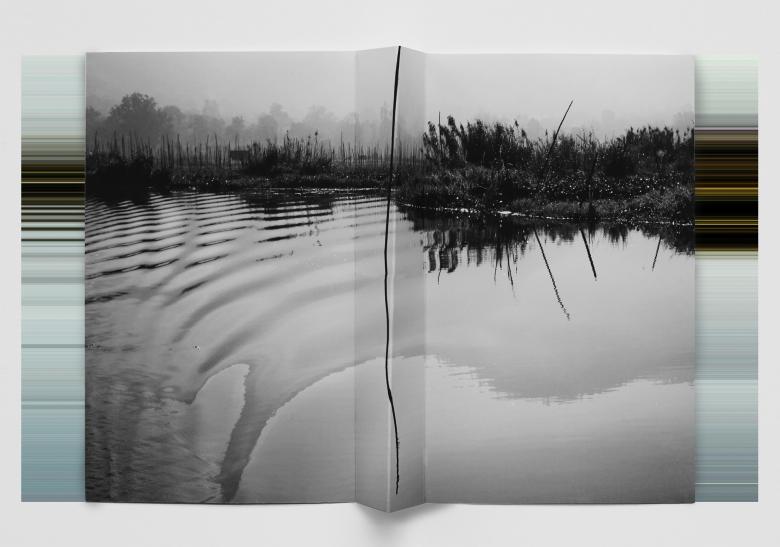
© Andrea Alkalay, Argentina, 1st Place, Latin America Professional Award, 2021 Sony World Photography Awards
The series won the 2021 Latin America Professional Award, a highly competitive title open to all photographers from the region entering the Professional competition. Speaking about her win, Andrea enthuses: ‘This prize has empowered me to move forward and to reach a wider audience. Alongside being mentioned in the most prestigious press in Argentina - as well as globally - it’s allowed me to connect with the photographic community in a more effective way. An exhibition at Oda Arte Gallery in Buenos Aires has just finished, where selected images from Landscape on Landscape were shown alongside super artist and my hero Esteban Pastorino.’
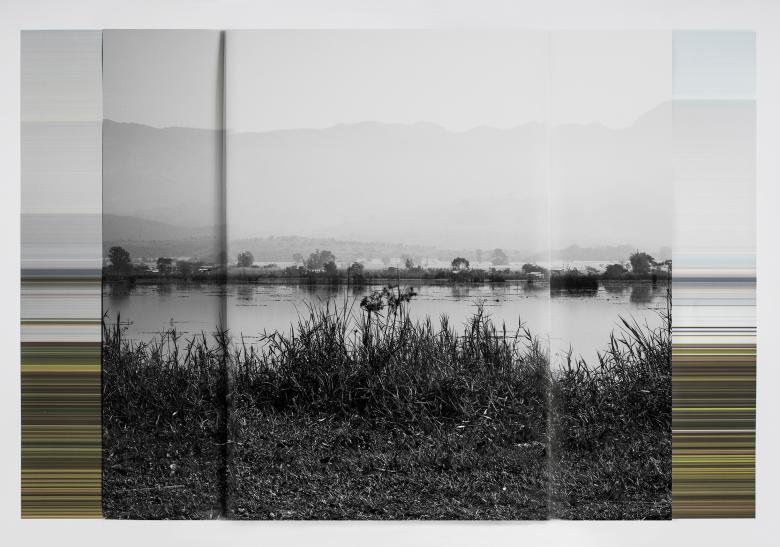
© Andrea Alkalay, Argentina, 1st Place, Latin America Professional Award, 2021 Sony World Photography Awards
Impressing the judges with her ability to merge the real and imagined, Andrea breaks away from the illustrative and distils the essence of the landscape to its core. The scenes presented in black & white are from her travels to Cambodia, India, Burma, Brazil, Uruguay (to name just a few), however Andrea insists where the photograph was taken is irrelevant. Looking beyond what she sees in front of her, the emphasis is instead on how each image presents a formally very beautiful scene. ‘I didn’t want documentary photographs of a place, instead I wanted to emphasise the pastoral quality of the subject. I tried to select landscapes often seen on generic postcards. I chose the most conventional images of forests, seascapes, mountains and lakes I had.’

© Andrea Alkalay, Argentina, 1st Place, Latin America Professional Award, 2021 Sony World Photography Awards
In this series we’re presented an idealised form of nature in the most traditional sense – just think of Ansel Adams, Edward Weston and all those other canonical black & white landscape photographers – yet Andrea uses these traditions for us to consider larger ideas. By including her extra layers of process – the coloured striped background and the folding of the monochrome print – she turns the conventionally beautiful image into something bigger. When I ask her about the thinking behind these additional steps, she explains, ‘I am interested in the idea of nature as a cultural construct and how presence or absence can impact how the image is viewed.’ She continues, ‘The lack of colour in the landscape, or the existence of depth in what might initially appear to be flat are all key in playing together to convey this project’s overall dialogue and themes.’
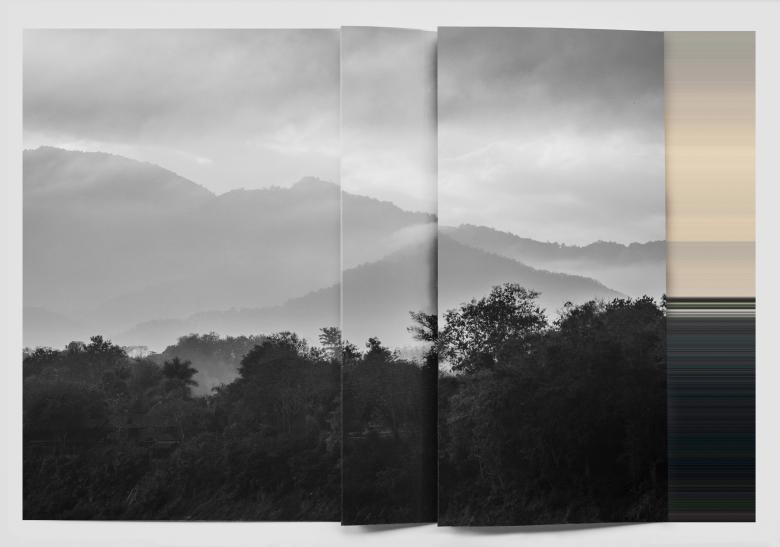
© Andrea Alkalay, Argentina, 1st Place, Latin America Professional Award, 2021 Sony World Photography Awards
The project’s three dimensional quality is something we miss when viewing the work digitally, which Andrea is ready to point out: ‘When in an exhibition the work looks quite different to how it’s seen online. Rather than being a photo of a photo, it transforms into a collage that reveals the material that’s made it.’ With the artworks printed at around 100x70cm, the image becomes an object for us to study – an element of the medium that can be forgotten in our digital world, where so often we see photographs flat on a screen.

© Andrea Alkalay, Argentina, 1st Place, Latin America Professional Award, 2021 Sony World Photography Awards
Speaking to Andrea it’s clear her work is driven from an artistic place. ‘I see myself not as a photographer but as an artist who uses the photographic image as a canvas for my ideas.’ With a background in industrial design, Andrea has more than 20 years experience communicating concepts in a visually engaging way. Drawn to photo-based artists such as Gerard Richter, Viviane Sassen, Luis González Palma, Joan Fontcuberta and Sophie Calle, Andrea enjoys individuals who challenge mediums that claim to represent the real. Formulating her own critical thinking and presenting these ideas through photography, her final artworks show us something so intimate of our world that in turn seems so unfamiliar we’re transported to another planet.

